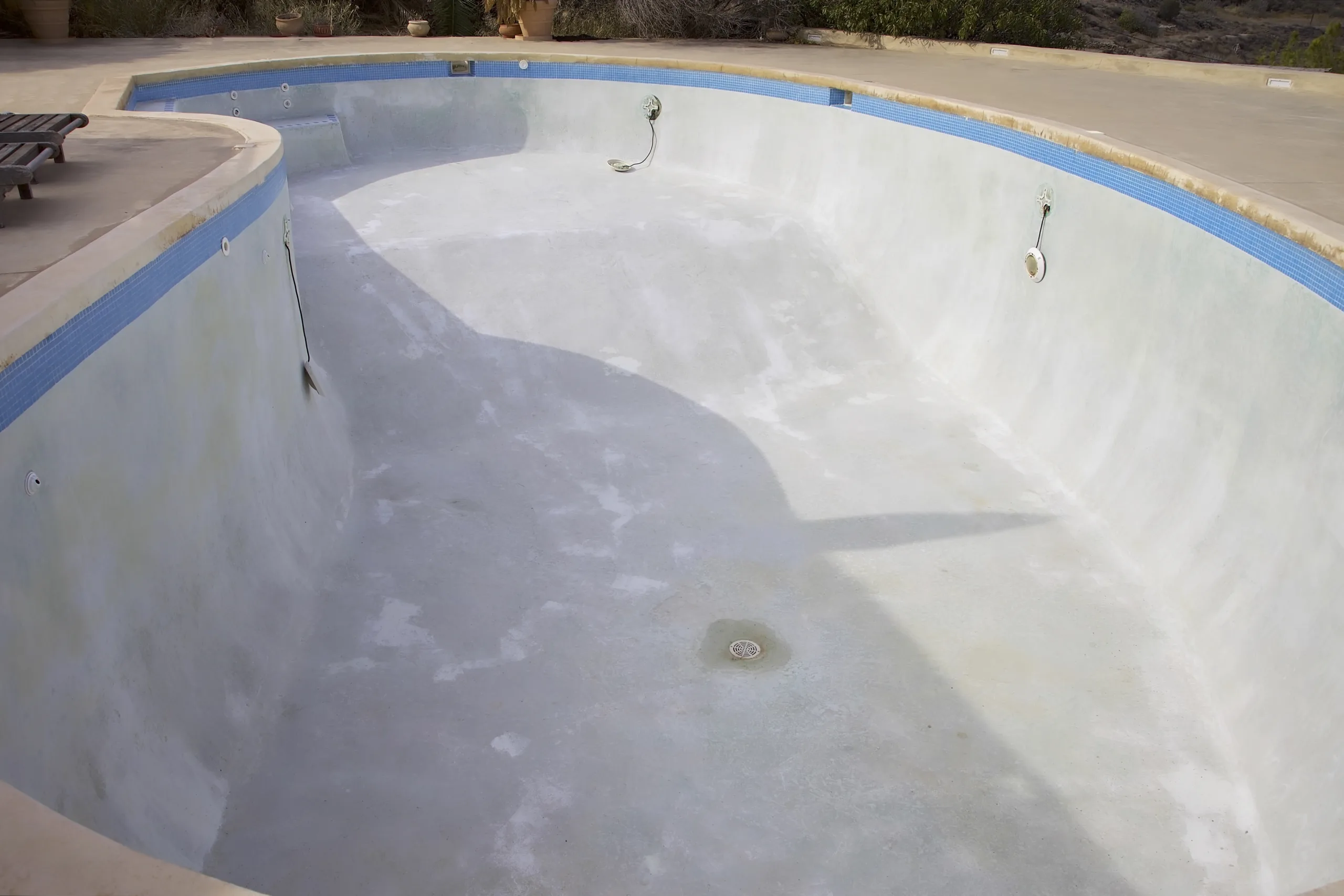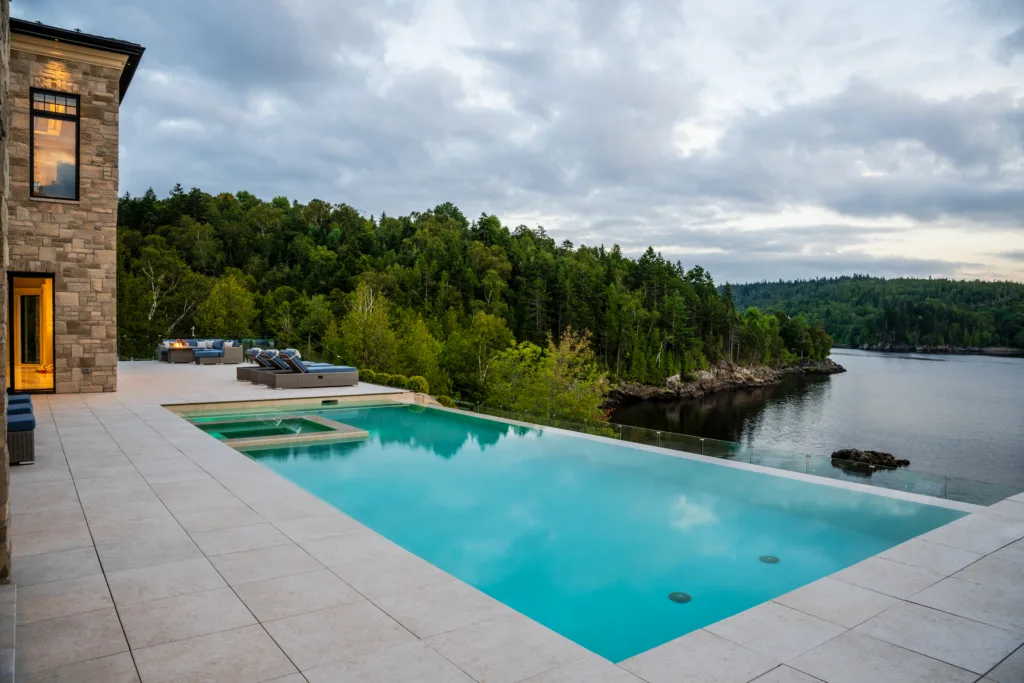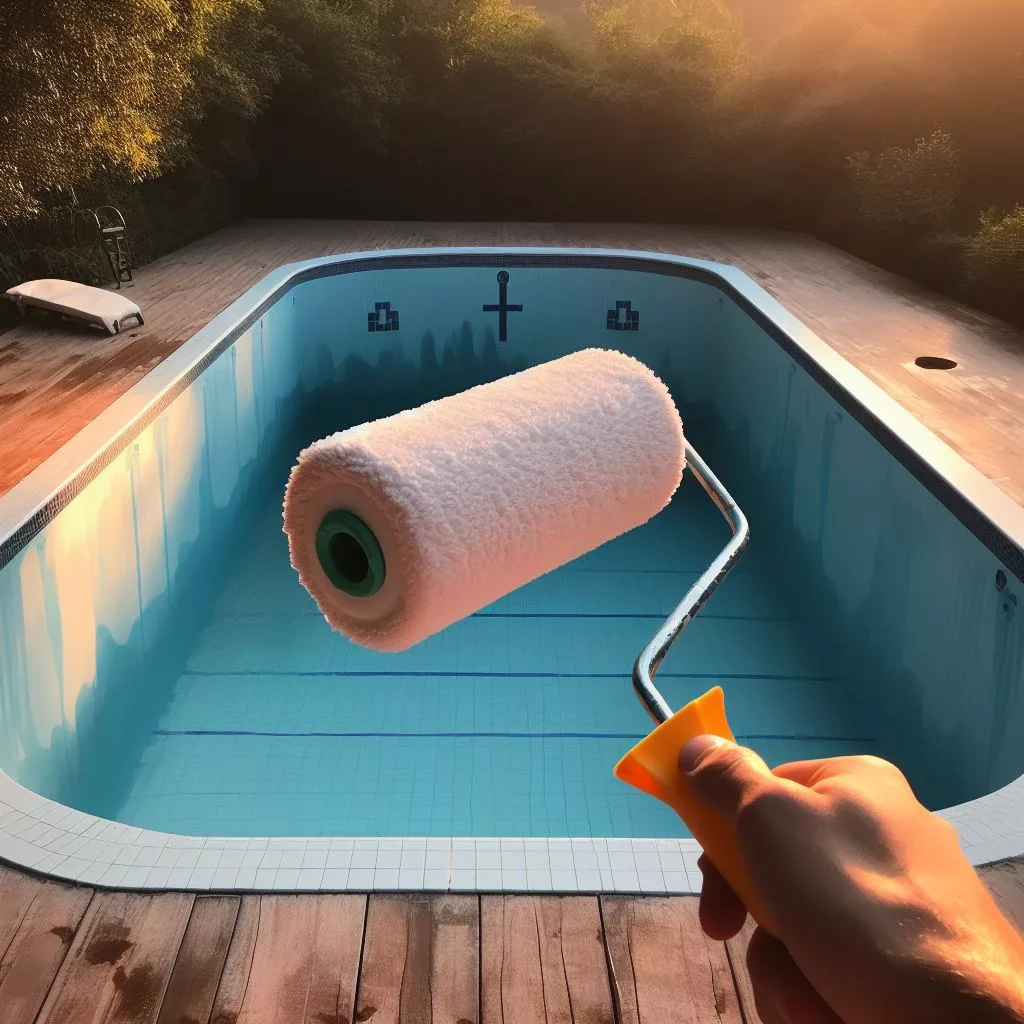Can I Paint My Pool Instead of Resurfacing?

Deciding whether to paint or resurface your pool can be a tricky decision for any homeowner. This blog post will guide you through the pros and cons of painting versus resurfacing your pool.
Differences between Repainting vs Resurfacing
Repainting your pool involves applying a fresh coat of paint, while resurfacing includes replacing the entire surface. Repainting is less durable than resurfacing and requires more frequent maintenance.
Durability and Longevity
Pool plaster can keep your pool in great shape for 15-20 years with the right mix, application, curing, and upkeep.
Pebble finishes, are known for their exceptional durability and aesthetic appeal. These finishes combine small, smooth stones with cement to create a strong and visually appealing surface. These can last between 20 to 25 years, making them one of the longest-lasting pool finishes available.
ecoFINISH® products, such as aquaBRIGHT, are high-performance polymer coatings that provide a durable and attractive finish for pools. These coatings are applied using a thermal process, creating a strong bond with the pool surface. With proper maintenance, ecoFINISH® can last between 10 to 15 years.

Pool Paint offers a shorter lifespan. Depending on the type used, paint may only last between two to five years before it needs redoing. Epoxy paint stands out as the most reliable type for pools, capable of lasting up to 10 years but still falls short compared to plaster’s longevity.
Preparation and Application
Preparation and application for pool painting require meticulous planning and execution. First, the pool surface must be thoroughly cleaned to remove any dirt, debris, or previous coatings.
Surface preparation also involves repairing any cracks or imperfections to achieve a smooth finish. Once the surface is ready, the correct type of paint should be chosen based on the pool’s material and conditions.
Appearance
When it comes to the appearance, pool paint, particularly epoxy paint, offers a smooth and vibrant finish. Initially, painted pools can look very attractive, with a wide range of colors available. However, over time, pool paint can fade, peel, and crack due to constant exposure to water, chemicals, and UV rays.
Pool plaster provides a classic, smooth finish that can be tinted in various colors. While white is the most common, other shades can create different aesthetic effects. Over time, plaster can develop stains, etch, or discolor if not properly maintained.
Pebble finishes are highly regarded for their natural and luxurious look. The combination of small, smooth stones creates a visually appealing texture and a more natural aesthetic. Pebble finishes come in a variety of colors and styles, allowing for a high degree of customization.
ecoFINISH® coatings offer a sleek, smooth finish that resists fading, staining, and chemical damage. These polymer coatings are available in a variety of vibrant colors, providing a modern and attractive look for pools
Factors to Consider Before Painting Your Pool
Before painting your pool, consider the type of paint to use and the surface preparation required. Also, take into account the impact on longevity and compare the cost with resurfacing.

Type of Paint
Epoxy Paint
Epoxy paint is a solvent-based paint that creates a hard, durable, and waterproof finish. It is known for its excellent resistance to chemicals, stains, and abrasion. Advantages include a long lifespan of up to 7-10 years, resistance to chemicals, UV rays, and stains, and a smooth and attractive finish. However, it requires extensive surface preparation, has a longer curing time of 5-7 days, and is more expensive compared to other types of pool paint.
Chlorinated Rubber Paint
Chlorinated rubber paint is a solvent-based paint that provides a flexible and smooth finish. It was widely used before the advent of epoxy paints. It is easier to apply than epoxy paint, resistant to mold, mildew, and algae, and has a shorter curing time of 3-5 days. However, it has a shorter lifespan of 2-5 years, less chemical resistance compared to epoxy paint, and is becoming less popular due to environmental concerns and availability issues.
Acrylic Paint
Acrylic paint can be water-based or solvent-based and is designed for ease of use and application. It is quick and easy to apply with minimal surface preparation, has a fast drying time (usually within a few hours to a day), and is more affordable than epoxy and chlorinated rubber paints. However, it has the shortest lifespan of 2-3 years, is less durable, more prone to fading, chalking, and peeling, and requires more frequent maintenance and reapplication.
Conclusion
Considering durability, preparation, and cost, repainting your pool can be a viable alternative to resurfacing. Factors like the type of paint used and proper surface preparation impact the longevity of the result.
Remember that painting requires maintenance as it may not last as long as resurfacing. When deciding between painting or resurfacing your pool, carefully weigh in factors such as cost, upkeep, and longevity to make an informed choice for your pool refurbishment needs.
FAQs
Yes, painting your pool can be an alternative to full-scale pool refinishing or resurfacing.
A pool coating is often quicker and less expensive than a complete surface treatment, offering an immediate upgrade to your existing structure.
While painting can offer aesthetic improvement and some level of protection, extensive damage may require more thorough procedures such as refinishing or total replacement.
